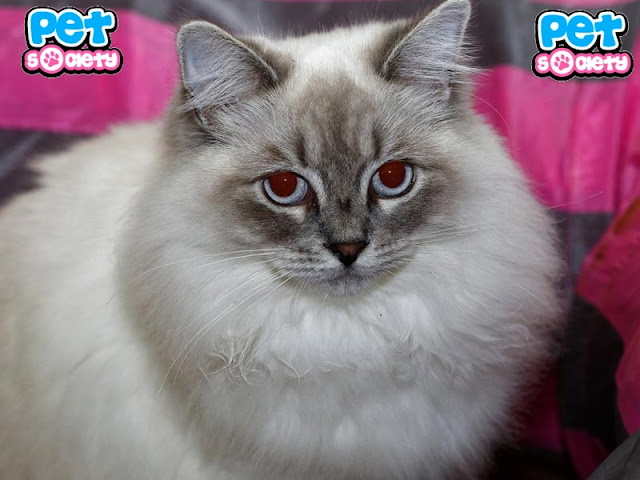Types of cats: the Tramp cat
 |
Cats |
The Tramp cat is famous for its large, tall body and stately fur, the true cuddling cat that loves its owners. Tramp cats are surprisingly smart, friendly, and elegant.Additionally, he likes to learn many new tricks and play games, such as fetch.
So that some of them learn to love walking on the leash! The Tramp cat is also adaptive, which means that it adapts in a variety of homes - apartments, large families, and small families - and makes an excellent family companion with younger children or other pets.
It is true that the Tramp cat is a very calm, docile cut, but its elegant nature means it can get bored without adequate attention and entertainment. If you bring a Tramp cat into your home, set aside several hours each day to play and have fun with it.
The Tramp cat breed
- Origin: California
- Weight: Males usually weigh between 5.5 and 9 kg, while females weigh between 4 and 7 kg.
- Length: up to 83cm
- The coat: long and soft
- Layer color: white, black, blue, red, purple, reddish-brown, gray, dark brown
- Eye color: amber, yellow, blue, green, and gold
- Life Expectancy: Up to 18 years
History of the Tramp Cat
Like its close cousin, the Ragdoll cat, the Tramp cat has a fairly short history as a distinct breed. After a ragdoll was first produced by Anne Baker in the 1960s, a group of breeders wanted to promote the diversity in the colors and patterns of their cat sizes and sizes.
Additionally, they wanted to add more genetic variation to their litters - a wider set of genes could provide some protection against genetic diseases. Anne Baker strictly controlled the breeding of Ragdoll cats - and she didn't want to add variation to her breed - so these breeders began creating their distinctive breed.
Breeders bred Ragdoll cats with the Shirazi cat, Himalayan cat, and long-haired domestic cats to increase the size of their cats, and to create physical traits that would distinguish the Tramp cat from the Ragdoll cats.
Although the name "Tramp Cat" was initially a joke by one of the original breeders, it stuck when the official breed registry could not be changed. Plus, it's a tribute to the cats of the Rag Doll, which inspired them to do so.
Take care of a tramp cat
Unlike many cats with long, soft coats, tramp coats are relatively low maintenance. Since it is tangle-resistant, you can brush or comb a Tramp cat once or twice a week to remove any tangles or a simple brushing and removal of dead hair buildup. What's more, Tramp cats are not prone to excessive hair loss.
Be sure to check Tramp's ears every week, to gently remove any dirt or debris with a damp cloth or cotton ball. If the tramp ears are very dirty, red, or inflamed, make an appointment with your vet right away. Avoid using cotton swabs, as they can damage delicate inner ear structures.
If the Tramp has any secretions around the eyes, remove them with a soft, damp cloth. Use different parts of the cloth for each eye to avoid spreading the infection. Like any breed of cat, gum disease can develop with poor dental hygiene. If you are not able to brush your cat's teeth daily.
The Tramp Cat Character
As mentioned earlier, Tramp cats are very playful and love the attention of their owners, but they can get bored if not stimulated properly. It is important to make time each day to play with your Tramp cat.
You can keep him occupied and entertained with loads of cat toys, games, and even fetch games. Since Tramp cats are all fun personalities, something as simple as a ball can keep them happy for hours. Since Tramp cats have a fearless personality, it is important that you never leave them alone
Common health problems
Polycystic kidney disease (PKD): PKD is the development of multiple cysts on the kidneys. They are not immediately life-threatening but should be treated as soon as possible in order to prevent the development of new cysts and reduce the risk of serious bacterial infection.
Hypertrophic cardiomyopathy (HCM): This type of heart disease is very common in cats, and is characterized by a thickening of the heart muscle. Cats with HCM are usually removed from breeding lines, but there is no guarantee against it.
Diet and nutrition
Like any cat, it is important to avoid overfeeding the cat; And because they are big cats, they don't have to be fat. His nutritional needs depend on age, gender, and activity, but a serving of high-quality cat food should be fed daily. If you want to add some variations to the diet, you can mix some wet foods into your meals several times a week.
Some Types Of Cats
- Siamese cat
- Persian cat
- Cat Maine Coon
- Ragdoll cat
- Bengal cat
- Abyssinian cat
- Birman cat
- Oriental cat with short hair
- Sphynx cat
- Devon Rex cat
- Himalayan cat
- American Shorthair Cat
- Exotic cat
- British Shorthair Cat
- Scottish Fold Cat
- Domestic cat, or domestic cat



